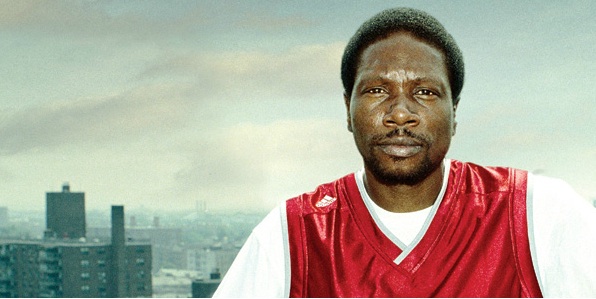Q&A: Download a new best friend with Soundwalk

Stephan Crasneanscki works as a guide devoted to getting people lost.
“We live in a society that already has so much information,” Stephan says. “I create audio guides with less information – they are about getting lost, not knowing more.”
The idea came during his PhD studies in art history at NYU in the late 1990s. Crasneanscki was shocked at how bad traditional museum tours were and decided to create his own. He wanted to lead people out of the museum and into a series of absurdist situations. The big New York museums balked.
Like most creative innovations, the underdogs swooped in to support Crasneanscki’s work. The Lower East Side Museum commissioned the first tour, and Crasneanscki went on to establish Soundwalk – the now internationally praised, award-winning company and collective. He asked his neighbor to narrate the guide, inviting listeners into the everyday life of a professional dominatrix living in the Lower East Side.
Soundwalk is now celebrating their 10-year anniversary. Over the past decade, the collective has unearthed soundscapes from the Mediterranean Sea to the streets of Beijing to the Bronx River. Their site-specific audio guides, installations, and performances challenge the listener to enter unlikely worlds and transcend cultural misinterpretations.
SmartPlanet spoke with Crasneanscki in his Soho studio last week. It’s uncanny that ethereal soundscapes are birthed steps away from the hustle of Broadway. Perhaps the friction of Soho hasn’t lost its artistic touch after all.
Why did you choose to use sound as your medium?
The 1980s and the first Sony Walkman radically changed how and why we listen to music. I remember the first time I walked outside with music blasting in my ears very clearly. The city transformed. This experience stayed in the back of my mind all these years.
You can create emotion and a narrative just by playing music, adding a voice or a sound effect to the experience of walking. I’m creating a movie where you are the main character.
How did Soundwalk gain traction in the beginning?
After we did the audio guide for the Lower East Side Museum, Adidas came to us. They offered us $200,000 to do whatever we wanted.

Back in the day, Adidas was scared of being associated with gangsters. Then suddenly they wanted to reconnect with their roots – they saw that hip hop was cool. So I thought it would be perfect to actually take people to the Bronx. It seems okay now, but back in the day the south Bronx, for anybody white, was an intense experience – and a beautiful one too.
I went to see Afrika Bambaataa, the equivalent of Elvis Presley for hip hop. He invented the art form along with DJ Jazzy Jay, who I also spoke with. We created an audio guide where you literally walk in the footsteps of where they lived and where they invented the art form during the first block parties.
This became an immediate hit. To my surprise, thousands and thousands of people – and still today – are going up to the Bronx with big headphones on and walking around. Nothing bad has ever happened. It’s been a beautiful success.
People from the Bronx are very proud of their neighborhood. So they are happy to have people come and see it. And whoever goes there, it is a big change from where they came from.
What compelled Adidas to fund something that is not direct advertising? How did you negotiate between Adidas wanting to communicate their brand, and creating a work of art?
What Adidas did first is what happened more and more in the next ten years, especially in the fashion world. In the late 1990s, industry became very attracted to the art world and the idea of tapping into a niche subcultural creative hub. By associating themselves with the brand, these small niches send back a message that the brand is cool.
Adidas was not cool. It was a dead brand. All the cool kids form the Bronx were actually wearing their shoes because they were so out of fashion it was fashionable to wear them. What Adidas has done in ten years is amazing. Now they are on the corner of Broadway and Houston with an enormous store. They’re on top of the game.
In many ways you now see luxury brands and big industry taking on the role the church had as art financier in the 19th and 20th centuries. Industry has bought massively into the art world.
Not all your projects are commissioned by luxury brands, and Soundwalk creates work beyond audio guides. Could you tell me about the recently completed project Ulysses’ Syndrome?
Two years ago we took a boat and left from Troy, which is now Turkey. We decided to do the same journey that Ulysses took 5,000 years ago.
On the boat we had military scanners – we saw ourselves as fisherman. We were fishing for sound. We scanned all the sound that would be traveling through the sea.
The beauty of the sea, like the desert, is that waveforms are not stopped by mountains or buildings. They can be picked up from very long distances.
The piece was about collecting voices of fisherman – of the clandestine: cigarette traffickers, cargos, militaries, submarines - we captured everything.
The most beautiful thing was sailing for days on end without seeing the coast yet hearing so many human stories of people we would never see. It was a very schizophrenic and poetic journey into the immensity and quietness of the sea. Into the human drama all around us.
How was it represented?
We’re burning our own vinyl here and playing it on 20 or 30 turntables at the same time.
Every vinyl has a different sound – the sea, voices, etc… As we listened on the boat, there was an accidental beauty. So we’re playing everything at the same time and allowing a poetic chaos to emerge.
Let’s talk about how you engage people in urban spaces. With the audio guides, you invite people to do something extremely social in a very isolated way. You also ask people to enter communities that are likely very different from their own.
The idea of the guide was to allow you to go into different places – to allow yourself not to be in control. The problem with social behavior is that we only hang out with people we know. Or we don’t know anyone, so we don’t hang out with anyone.
Doing the soundwalks you find yourself deep in China Town. Next you’re in a Jewish Hasidic neighborhood in Brooklyn. Then you’re in the Bronx. Then you’re with trade bankers. How can we have access to these foreign milieus and behave appropriately? The game of Soundwalk teaches you how to behave in order to not look lost. The narrator – whoever we choose – is always the most legitimate and known personality of the neighborhood. This person will be your best friend.
Many of these communities are quite isolated. And there’s a reason for that – for example the Hasidic community. Have you come across conflicts in inviting outsiders in?
I’m attracted to those communities because the first reaction of most people is fear, rejection, or suspicion. As soon as you get to know the community, you love it. Because, like everything, intolerance comes from not knowing.
On the other hand, these communities like to live among themselves. They are not looking to expand or publicizing their lifestyle. I always find people who are enthusiastic about what they’re doing and love the concept of Soundwalk. Another part of the population doesn’t want to open the door. At the end of the day, I don’t really ask them. I just do it.
I try to teach the listener how to behave so they can enter the community without hurting anybody's sensibilities. At the end of the day, I think I’ve done my good karma. Whoever goes into the Bronx, or the Hasidic neighborhood, or any other community, comes out more appreciative of it.
What should people look out for? Are there any upcoming shows?
After Ulysses’ Syndrome we went to the Black Sea. Medea is like volume two of Ulysses’ Syndrome. We traced the voyage of Jason and the Argonauts in Medea and entered the sea with scanners. We’ll be performing Medea at the Dia Foundation soon.
We’re also doing a bunch of shows in Berlin. We’ve been recording the sounds of clubs all over Germany for a piece called The Only Good System is a Sound System.
Photos: Soundwalk
This post was originally published on Smartplanet.com
